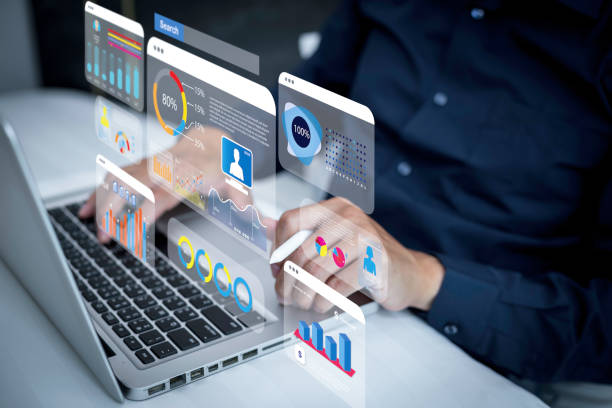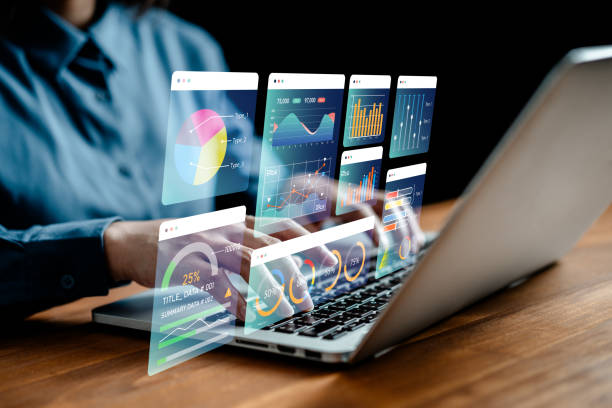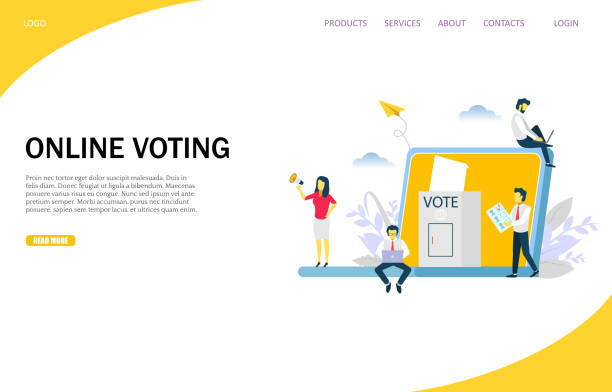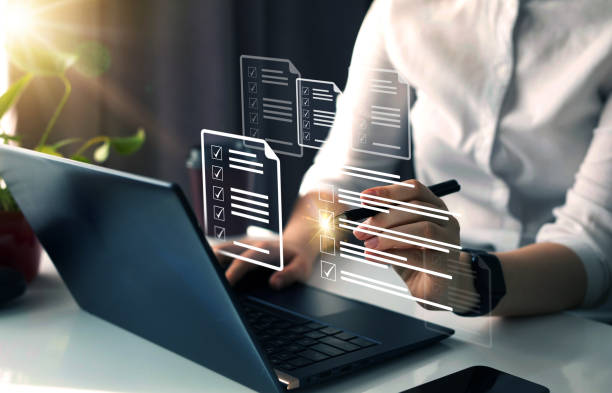What is Internal SEO? Understanding the Basics of On-Page Optimization

#Internal SEO, refers to a set of actions performed within your website to improve its ranking in search engine results.
These actions include optimizing various elements such as content, website structure, and HTML codes.
The main goal of implementing Internal SEO is to help search engines better understand the topic and value of your pages, consequently displaying them to more relevant users.
Unlike external SEO, which focuses on link building and off-site activities, internal optimization is completely under your control and can have a very direct impact on the success of your SEO campaign.
This educational section helps you understand the key differences and importance of this field.
When search engines like Google review a page, they pay attention to factors such as keywords, page title, meta descriptions, and URL structure.
A specialized approach to internal SEO means paying attention to details, from choosing appropriate keywords to ensuring site loading speed and optimal user experience.
These actions not only help with ranking but also improve user experience.
Understanding how search engines see your pages is the first step to success.
For example, correct use of title tags (H1, H2) and meta descriptions sends stronger signals to engines, ensuring your content is properly indexed.
This comprehensive guide is essential for starting your journey in the complex world of SEO.
Does your current website convert visitors into customers or drive them away? Solve this problem forever with professional corporate website design by Rasawab!
✅ Build powerful credibility and branding
✅ Attract target customers and increase sales
⚡ Get a free consultation now!
Effective Keyword Research for Internal SEO

#Keyword research is the backbone of any successful SEO strategy, especially for internal SEO.
For your content to be found by targeted users, you need to use the words they type into search engines.
This process involves identifying phrases that have the most potential to attract relevant traffic to your site.
Various tools like Google Keyword Planner, Ahrefs, and Semrush can assist you in this area.
But beyond search volume, understanding user intent is of paramount importance.
Is the user looking for information (explanatory and educational keywords)? Does he intend to buy (commercial keywords)? Or is he looking to navigate to a specific site? Answering these questions helps you produce content tailored to user needs.
Using long-tail keywords is also a smart strategy; although these phrases have lower search volume, they more accurately reflect user intent and have higher conversion rates.
This section is a detailed tutorial on how to find and use these words.
After identifying keywords, you should naturally and organically incorporate them into your content, including in the title, meta descriptions, headings, and main text.
Avoid over-repetition of keywords (Keyword Stuffing), as this not only harms your SEO but also disrupts the user experience.
Creating inquiry-provoking content around keywords can increase user engagement and send positive signals to search engines.
The ultimate goal is to produce content that is both understandable to search engines and valuable to users.
Content and Meta Tag Optimization in Internal SEO

#Content and meta tag optimization is a vital part of internal SEO that helps search engines correctly identify the topic and value of your pages.
The Title Tag is considered the most important On-Page signal.
This tag should include the page’s main keyword, be engaging, and short (about 50-60 characters) to be fully displayed in search results.
Next, there is the Meta Description, which, although not directly affecting ranking, can significantly increase your Click-Through Rate (CTR).
The meta description should provide an engaging summary of the page’s content and include relevant keywords.
This is an excellent opportunity to provide a concise and persuasive explanation.
Correct use of heading tags (H1 to H6) is crucial for content structuring.
H1 should contain the main keyword and be used only once per page, while H2 to H6 are used for subheadings and hierarchical organization of content, aiding readability.
Content quality is also of high importance.
Your content should be comprehensive, unique, and valuable to the user.
This includes depth of topic, accuracy of information, and offering new perspectives.
Use Latent Semantic Indexing (LSI) Keywords to help search engines better understand the main topic of your content.
This specialized approach not only helps with ranking but also enriches the user experience.
Continuous optimization of these elements is essential for maintaining and improving your position in search results.
On-Page Optimization Elements Checklist
| Internal SEO Element | Key Tips | Importance |
|---|---|---|
| Title Tag | Includes main keyword, short and engaging, 50-60 characters | Very High |
| Meta Description | Engaging content summary, contains keywords, increases CTR | Medium to High |
| Heading Tags (H1-H6) | H1 only once, includes keyword, content structuring | High |
| Text Content | Comprehensive, unique, valuable, natural use of keywords | Very High |
| Friendly URL | Short, includes keyword, readable for humans and bots | Medium |
Image Optimization and Loading Speed in Internal SEO
![]()
#Image optimization and site loading speed improvement are two other vital factors in internal SEO that are often overlooked but significantly impact user experience and site ranking.
Unoptimized images can severely reduce page loading speed and drive users away from your site.
To optimize images, you must first reduce their file size without significantly compromising visual quality.
Newer formats like WebP can greatly help in reducing file size.
Alternative text (Alt Text) for images is of particular importance.
This descriptive text helps search engines understand the image content and is also useful for visually impaired users.
Alt Text should include relevant keywords but avoid Keyword Stuffing.
Image file names should also be descriptive and include keywords.
Tools like Google PageSpeed Insights can help you identify site speed issues.
Factors affecting loading speed include: file compression (Gzip Compression), browser caching, reducing the number of HTTP requests, code optimization (CSS, JavaScript), and using Content Delivery Networks (CDN).
A fast site not only provides a better user experience but is also preferred by search engines, as it indicates a quality site.
This section is a comprehensive guide to speeding up your website.
Paying attention to these specialized details can make a big difference in your internal SEO performance and lead to more organic traffic.
Is your online sales not as expected? With Rasawab, solve the problem of low sales and poor user experience forever!
✅ Increase visitor to customer conversion rate
✅ Create an enjoyable user experience and increase customer trust
⚡ Take action now for a free consultation!
The Role of Internal Linking in Internal Site SEO

#Internal Linking is one of the most important yet often overlooked aspects of internal SEO.
Internal links are links that point from one page on your website to another page within the same website.
These links play a vital role in facilitating user navigation on your site and help search engines better understand your site’s structure and index different pages.
When search engines crawl your pages, they reach other pages through internal links and distribute value (Link Juice) among them.
This means your more important pages should receive more links from other powerful pages.
Using descriptive and keyword-rich anchor texts for internal links is very important.
This sends stronger signals to search engines about the content of the destination page.
For example, instead of ‘Click here,’ use ‘Complete Guide to Image Optimization‘.
A strong internal linking strategy can help improve specific keyword rankings and increase traffic to deeper pages of your site.
This tutorial shows you how to create a hierarchical and logical internal linking structure.
Creating a pyramidal structure, where main pages link to category pages and then to product/service pages, is a specialized approach that helps improve authority distribution and crawlability.
Additionally, internal links can increase user dwell time on your site, which is another positive signal for search engines and significantly contributes to overall internal SEO performance.
This is an analytical solution for improving your site’s structure.
Using Structured Data (Schema Markup) for Internal SEO

#Structured data or Schema Markup refers to semantic codes added to your website to help search engines understand your content more deeply.
These codes provide specific information about page elements such as products, articles, events, and reviews to the search engine.
Using Schema Markup can enable your site to be displayed as Rich Snippets in search results.
These Rich Snippets include additional information such as star ratings, prices, or cooking times, which can dramatically increase your Click-Through Rate (CTR) and attract more organic traffic.
Implementing Schema Markup is a specialized aspect of internal SEO that requires technical knowledge, but its benefits are numerous.
There are various types of Schema Markup, including Schema Article for articles, Schema Product for store products, Schema Review for user reviews, and Schema LocalBusiness for local businesses.
Choosing the correct Schema type for your content is very important.
For example, if you have an educational blog, Schema Article can help Google identify your articles as educational content.
This section is a comprehensive guide for selecting and correctly implementing Schema Markup.
This is an excellent opportunity for inquiry-provoking content that can be displayed as an FAQ Schema.
Although Schema Markup is not directly a ranking factor, by improving your appearance in SERP and increasing CTR, it indirectly helps improve internal SEO performance.
This is an analytical approach to increase your visibility in search results.
User Experience and Quality Content: The Foundation of Successful Internal SEO
![]()
#In today’s SEO world, User Experience (UX) and content quality are considered the main pillars of internal SEO.
Search engines are increasingly focusing on signals related to user interaction with the site; factors such as Bounce Rate, Dwell Time, and Click-Through Rate (CTR) can indicate the quality of your content and overall user experience.
Therefore, producing comprehensive, accurate, and valuable content for users is no longer an option but a necessity.
Quality content should address user needs and questions and be presented in an explanatory and understandable manner.
This content should be engaging enough to encourage users to stay longer on the page and explore more of your site.
This includes using relevant images and videos, short paragraphs, bulleted lists, and readable fonts.
This tutorial helps you optimize your content for users and search engines.
Well-researched entertaining or news content can significantly increase user engagement.
Do not forget that the ultimate goal of Google and other search engines is to provide the best and most relevant results to their users.
If your site has a poor user experience or your content is shallow and worthless, you cannot achieve high rankings even with the best technical optimizations.
Core Web Vitals Google, such as LCP, FID, and CLS, are also important metrics for measuring user experience that directly impact internal SEO.
Consequently, investing in producing outstanding content and continuously improving user experience is the key to sustainable success in internal optimization.
Key User Experience Metrics in SEO
| Metric | Description | Importance for SEO |
|---|---|---|
| Bounce Rate | The percentage of visitors who view only one page and then leave the site. | A lower rate indicates relevant and engaging content. |
| Dwell Time | The amount of time a user stays on a page of the site. | More time indicates satisfaction and content value. |
| Click-Through Rate (CTR) | The percentage of users who click on your site after seeing it in search results. | The highest CTR indicates the attractiveness of the title and meta description. |
| Page Loading Speed | The speed at which page content is displayed to the user. | Faster sites rank higher and provide a better user experience. |
Internal SEO Performance Analysis and Tracking Tools

#After implementing internal SEO strategies, continuous monitoring and analysis of site performance are of paramount importance.
Without appropriate tools, it will be impossible to determine the effectiveness of your efforts and identify areas that need improvement.
Google Analytics and Google Search Console are two free and very powerful tools from Google that every SEO specialist should be familiar with.
Google Analytics provides comprehensive information about user behavior on your site, including the number of visitors, most visited pages, time spent on site, bounce rate, and traffic sources.
Using this information, you can gain a deeper understanding of how users interact with your content and identify underperforming pages.
This is an analytical look at your site’s performance.
On the other hand, Google Search Console (formerly Webmaster Tools) helps you view your site’s performance from Google’s perspective.
This tool provides information about the keywords your site ranks for, crawl errors, indexing issues, site security status, and backlinks.
This information is crucial for fixing technical internal SEO issues and improving search visibility.
This section provides guidance on how to use these tools for continuous monitoring and optimization.
In addition to these Google tools, other specialized platforms like Ahrefs, Semrush, and Moz offer more advanced capabilities such as deeper keyword research, competitor analysis, and rank tracking.
By regularly using these tools and analyzing data, you can make data-driven decisions for continuous improvement of your internal SEO and always stay a step ahead of competitors.
Regular review of these tools’ reports can provide you with news and up-to-date information on your site’s status.
Research shows that 80% of customers trust companies with professional websites more. Does your current site attract this trust?
With Rasawab’s corporate website design services, permanently solve the problem of customer distrust and a weak online image!
✅ Create a professional image and increase customer trust
✅ Generate more sales leads and business growth
⚡ Get a free consultation
Avoiding Common Mistakes in Internal SEO Implementation

#While focusing on the best practices of internal SEO is essential, awareness of common mistakes and avoiding them is equally important.
Some of these mistakes can nullify your SEO efforts and even lead to penalties by search engines.
One common mistake is excessive keyword repetition (Keyword Stuffing).
In the past, some sites tried to deceive search engines by stuffing their pages with keywords, but today this is an outdated tactic that harms user experience and can lead to lower rankings.
Your content should be natural and written for humans, not just for bots.
Another mistake is thin or duplicate content.
Google rewards comprehensive, unique, and valuable content for the user.
Pages with thin or copied content have little value for users and search engines.
Broken Links are also a common problem that both harm user experience and signal to search engines that your site is not well-maintained.
Regularly checking and fixing these links is crucial.
Ignoring mobile-friendliness is also a big mistake, as most searches today are conducted via mobile devices.
A non-responsive site will not rank well.
This tutorial helps you avoid these pitfalls.
Failure to regularly update content, neglect of site speed, and not using appropriate HTML tags (such as H1, H2, meta descriptions) are also common mistakes in the field of internal SEO.
By being aware of these errors and striving to avoid them, you can ensure that your internal optimization efforts yield the best possible results and your site remains safe from potential search engine penalties.
The Future of Internal SEO and Emerging Trends

#The world of internal SEO is constantly evolving, and with the emergence of new technologies and changes in search engine algorithms, it is necessary to always stay up-to-date.
One important trend is Voice Search.
With the increasing use of voice assistants like Siri and Google Assistant, keywords are becoming longer and more question-based.
Optimizing content to answer direct and conversational questions is a specialized and growing aspect of internal optimization.
Artificial Intelligence (AI) and Machine Learning also have an increasing impact on how search engines understand content.
Algorithms like RankBrain and Google’s BERT have improved the ability to understand user intent and the true meaning of words.
This means that content quality, depth of topic, and the ability to respond to inquiry-provoking content become more important.
Focusing on Google’s E-A-T (Expertise, Authoritativeness, Trustworthiness) principles has also become crucial for internal SEO, especially in sensitive areas like health and finance (YMYL – Your Money Your Life).
Sites must demonstrate that their content is produced by experts, is authoritative, and trustworthy.
This includes displaying author information, citing reputable sources, and collecting positive reviews.
This is an analytical and advanced approach.
Visual Search is another trend that should be considered, by optimizing images for visual search through tools like Google Lens.
Ultimately, internal SEO is no longer just about keywords and tags; it’s about creating an unparalleled user experience and providing real value to users.
By following these trends and adapting your strategies, you can also be a leader in the future of SEO and produce entertaining and useful content.
Frequently Asked Questions
| Question | Answer |
|---|---|
| What is Meta Title and why is it important in internal SEO? | The meta title is the most important element of internal SEO displayed at the top of the browser tab and in search results. It helps search engines and users understand the main topic of the page and should include the main keyword. |
| What role does Meta Description play in internal SEO? | The meta description is a short summary of the page content displayed in search results below the title. Although it doesn’t directly impact rankings, its attractiveness can increase the Click-Through Rate (CTR). |
| How should keywords be used in page content? | Keywords should be used naturally and relevantly in strategic locations such as the title, headings, first paragraph, and body text. Avoid excessive keyword stuffing. |
| What is the importance of quality and comprehensive content in internal SEO? | High-quality, unique, informative, and comprehensive content that addresses user needs is of great importance. Search engines give higher rankings to content that provides real value. |
| What is the application of heading tags (H1-H6) in internal SEO structure? | Heading tags (H1, H2, H3, etc.) are used to structure content and indicate the importance of different sections. H1 is the main title of the page, and each page should have only one H1. Other tags are used for subheadings. |
| How to optimize images for improving internal SEO? | To optimize images, use descriptive Alt Text that includes relevant keywords, reduce image file size without compromising quality, and use meaningful and relevant file names. |
| What features does a friendly URL have for internal SEO? | A friendly URL should be short, readable, descriptive, include main keywords, and be free of extra characters. The URL structure should be hierarchical and logical to be understandable for both users and search engines. |
| How does Internal Linking help internal SEO? | Internal linking, by connecting related pages, helps users and search engine crawlers better understand the site structure, transfer page authority, and increase user dwell time on the site. |
| What is the impact of page loading speed on internal SEO? | High loading speed is crucial for both user experience and SEO ranking. Slower pages might be ignored by search engines and lead to an increased Bounce Rate. |
| Why is Mobile-Friendliness highly important in internal SEO? | Given the increasing number of searches via mobile devices, having a responsive and mobile-friendly site is crucial for user experience and ranking in search results (Google’s mobile-first indexing). |
And other services of Rasawab Advertising Agency in the field of advertising
Smart Brand Identity: Professional optimization to improve SEO ranking using real data.
Smart Link Building: A professional solution for analyzing customer behavior focusing on Google Ads management.
Smart Brand Identity: Transform campaign management with precise audience targeting.
Smart Website Development: Professional optimization for increasing site traffic using user experience customization.
Smart Link Building: Designed for businesses seeking online growth through precise audience targeting.
And over a hundred other services in the field of internet advertising, advertising consulting, and organizational solutions
Internet Advertising | Advertising Strategy | Advertorial
Resources
Advanced SEO Strategies on VirgoolComprehensive Guide to Advanced Internal SEOKey Tips for Improving Site Ranking on GoogleInternal SEO Techniques for Ranking Improvement
? Are you ready to transform your business in the digital world? Rasawab Afarin Digital Marketing Agency, by providing professional services including WordPress website design and SEO optimization, paves the way for your online success. Build a bright future for your brand with us.
📍 Tehran, Mirdamad Street, next to Central Bank, Southern Kazeroun Alley, Ramin Alley, No. 6



